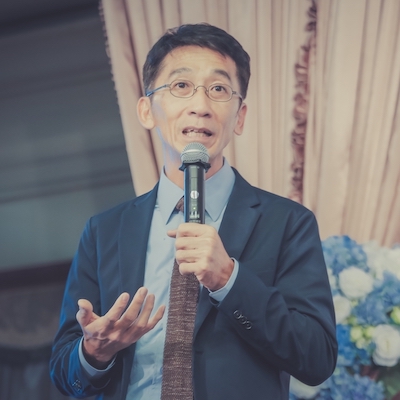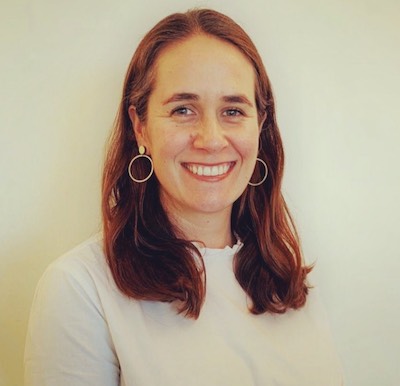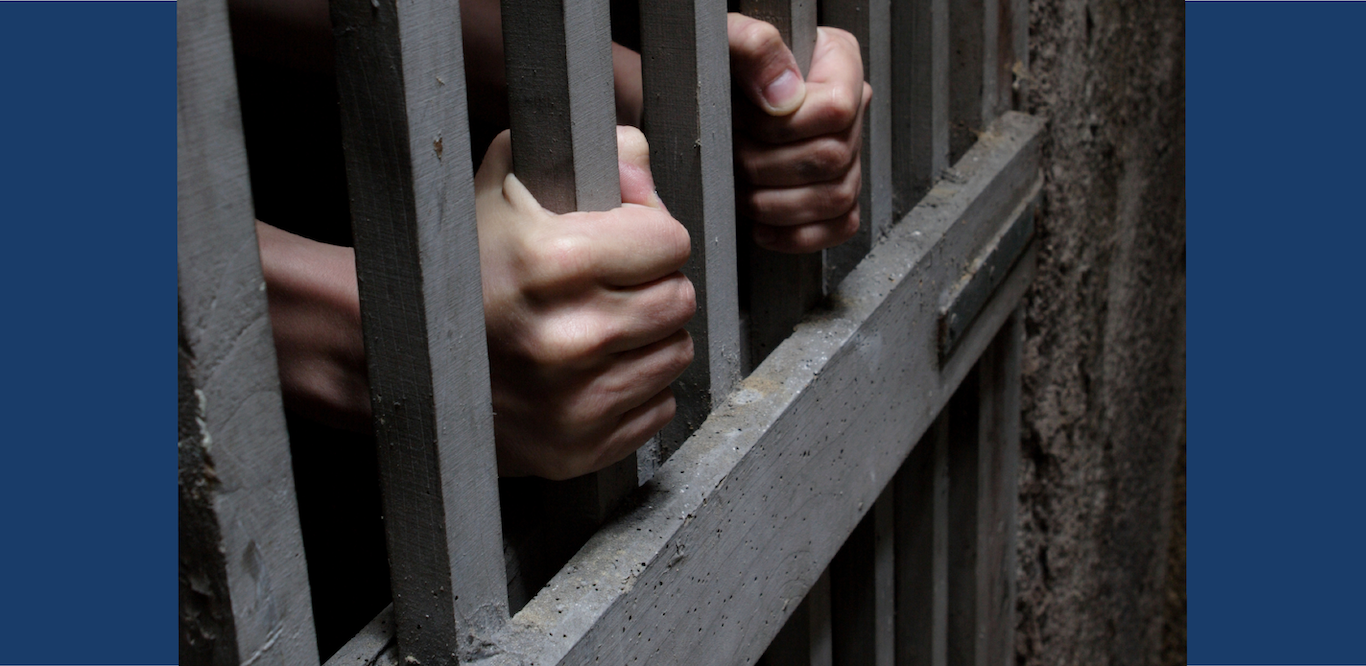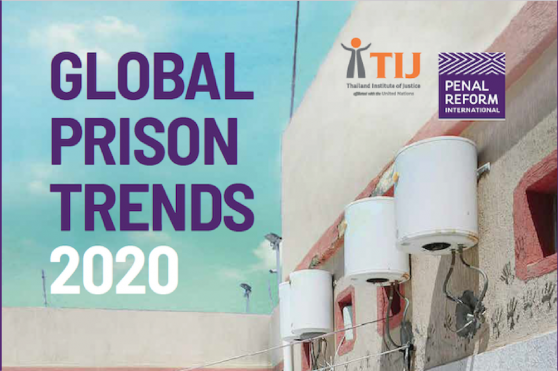New Normal Recommendations for “Prisons” – Criminal Penalization before Imprisonment
Section 29 Paragraph 2 of the 2017 Constitution stipulates that the alleged or defendant in a criminal case shall be presumed innocent, and before the passing of a final judgment convicting a person of having committed an offence, such person shall not be treated as a convict.
“Regardless of the last part of this section…before the passing of a final judgment, such person shall not be treated as a convict…, there are many people who are in custody on remand. Even though the Court may grant bail to such person but the bail guarantee would be considerably high, thus, making the bail unaffordable. Even so, these people are eligible for the benefit of the law, that is, even though they cannot get out on bail, they should not be treated as a convict. However, we often see that these people are locked up in prisons; they wear prisoner uniforms, haircut and ankle chains. This means that any person who is alleged and brought to the Court and cannot afford the bail will be treated as a convict and locked up in prison nonetheless.”
 “No one should be imprisoned because they are poor.” is a project supported by Assoc. Prof. Prinya Thaewanarumitkul, the Vice-Chancellor for Rangsit Center Sustainability and Administration Division, Thammasat University. Assoc. Prof. Prinya mentioned the above statement during RoLD Virtual Forum on the topic of Living with COVID-19 hosted by the Thailand Institute of Justice (TIJ). On the 9th of May, the topic of discussion was the “Global Prison Trends 2020 and Criminal Penalization amidst COVID-19”.
“No one should be imprisoned because they are poor.” is a project supported by Assoc. Prof. Prinya Thaewanarumitkul, the Vice-Chancellor for Rangsit Center Sustainability and Administration Division, Thammasat University. Assoc. Prof. Prinya mentioned the above statement during RoLD Virtual Forum on the topic of Living with COVID-19 hosted by the Thailand Institute of Justice (TIJ). On the 9th of May, the topic of discussion was the “Global Prison Trends 2020 and Criminal Penalization amidst COVID-19”.
Vice-Chancellor of Thammasat University provided that prisoners can be divided into two categories. The first one is those who ought to be imprisoned because they committed an offence, possess harmful behaviors and show no tendency of behavioral adjustment. This group of prisoners should be parted from the society and be in prison.
 Another group is “those who were not supposed to but were imprisoned nevertheless”. The figure of prisoners in Thailand was presented: as of the 1st of April 2020, there are approximately 377 thousand prisoners while standard prison capacity is around 200 thousand prisoners which means that each prisoner has only a little over 1 square meter of space. The space is considerably limited and would become a risk area if any prisoner is infected with COVID-19 as it is impossible to implement the social distancing measures. As mentioned, there were periods when 30 per cent (around 100 thousand) prisoners are those on remand. They remain even without the passing of a final verdict. If we take a closer look at the data, we will see that among 100 thousand prisoners on remand, 65-70 per cent of which have been granted bail by the Court, but they do not have sufficient asset to be offered as bail security and have to remain in prison. Amount of bail is usually set at a very high price, even though it was done with the intention to prevent prisoners escaping, we have to admit that this principle can cause inequality in practice.
Another group is “those who were not supposed to but were imprisoned nevertheless”. The figure of prisoners in Thailand was presented: as of the 1st of April 2020, there are approximately 377 thousand prisoners while standard prison capacity is around 200 thousand prisoners which means that each prisoner has only a little over 1 square meter of space. The space is considerably limited and would become a risk area if any prisoner is infected with COVID-19 as it is impossible to implement the social distancing measures. As mentioned, there were periods when 30 per cent (around 100 thousand) prisoners are those on remand. They remain even without the passing of a final verdict. If we take a closer look at the data, we will see that among 100 thousand prisoners on remand, 65-70 per cent of which have been granted bail by the Court, but they do not have sufficient asset to be offered as bail security and have to remain in prison. Amount of bail is usually set at a very high price, even though it was done with the intention to prevent prisoners escaping, we have to admit that this principle can cause inequality in practice.
“Setting off a bail amount is not stipulated in any of the provisions of the Penal Code. However, there are stipulations in the Notifications of President of the Supreme Court (ages ago) such as bail amount shall be THB 800 thousand for offences with the death penalty; THB 600 thousand for life imprisonment; THB 20 thousand per year for offences the heaviest penalty is imprisonment. My question is, how many people are there in our country who have THB 800, 600 and 400 thousand? This means that for similar types of cases, those with more money can bail and remain off-prison during the trial while those without have to remain in prison. Even though they may eventually be proven innocent, they have done their undeserved time in prison. These people may have elderly parents or small children who are relying on them as well.”
Assoc. Prof. Prinya also mentioned the issue of people being imprisoned because they cannot afford to pay a “fine.” Section 29 of the Penal Code stipulated that “If any person imposed with the punishment of fine fails to pay such fine within 30 days as from the day the Court rendered the judgment, his or her property shall be seized or claims in any property shall be sequestrated to pay for the fine or such person shall be confined in lieu of fine.” This simply means that those who cannot afford to pay the fine, have to be imprisoned even though they may have committed the same offence with the next person who can afford it. Even though this provision was amended in 2016 by an addition of Section 30/1 allowing those who cannot afford the fine to request the Court to allow them to serve their sentence by “community or public service in lieu of the fine” or the Court may allow so upon its discretion. In practice, however, this approach has been rarely undertaken. Speculations are, most of the judges are not aware of this amendment and did not inform the alleged of this right. It also shows that imposing community service in lieu of a fine depends on the discretion of the Court. Community service should be made fundamental for those who cannot afford the fine instead of imprisonment in lieu of a fine and without having to rely on the Court’s discretion.
Assoc. Prof. Prinya concluded that “Prisons is for criminals.” Those who are not criminals do not belong in prisons, especially in Thailand, where drug offenders form the majority of the prison population. In many countries, i.e. the Netherlands, drug offenders are deemed as people with health issues who require treatment based on public health approach and only major drug lords are imprisoned. In Thailand, narcotic suppression policy targeting amphetamine, more so than others, leads to the unrealistically high price of the substance, even though it is not as strong as heroin. The strict suppression policy also increases the rate of drug trafficking because it yields a lot of money and drug users who cannot afford amphetamine have to take on the role of retailers. Therefore, to solve the issue of prison overcrowding, especially during this time of COVID-19, we have to look back at the starting point of the judicial process. This covers the police, public prosecutors and the Court being the entities that apprehend, file a lawsuit and render judgment on “who” should be imprisoned. It was found that not all of the three entities are under the Ministry of Justice and therefore, there has been no operational integration which can lead to the overall evaluation of the outcome of the judicial process, implementation of the law, methods of apprehension and rendering of judgment.
 Mr. Wanchai Roujanavong, the representative of ASEAN Commission on the Promotion of the Rights of Women and Children, former Director-General of the Department of Probation and Department of Corrections, explained the reason why Thailand is unable to reform its penalization through effective reduction of imprisonment. That is, the law stipulates only five categories of penalty under criminal law: death penalty; imprisonment; confinement; fine, and forfeiture of property. The most common penalty is “imprisonment”.
Mr. Wanchai Roujanavong, the representative of ASEAN Commission on the Promotion of the Rights of Women and Children, former Director-General of the Department of Probation and Department of Corrections, explained the reason why Thailand is unable to reform its penalization through effective reduction of imprisonment. That is, the law stipulates only five categories of penalty under criminal law: death penalty; imprisonment; confinement; fine, and forfeiture of property. The most common penalty is “imprisonment”.
Mr. Wanchai further explained that the death penalty is rarely imposed nowadays. Confinement penalty is also rare even with the availability of detention facilities. Currently, there are only 1.7 thousand detainees. For fine penalty, the law in force since 1957 originally stipulated that THB 2,000 fine can be imposed in lieu of a year of imprisonment. At the time, the amount is equivalent to 5 Baht of gold (75.8 Grams). At present, even with the 10-fold increase of the fine to THB 20 thousand, the amount only worth 1 Baht of gold (15.16 Gram). Hence, the fine penalty is essentially meaningless, and the same goes for the forfeiture, which nowadays is very rarely imposed.
The Court therefore has limited penalization options and other measures alternative to imprisonment are not sufficiently effective, making it a go-to penalty imposed by the Court. If the Court decides to suspend the sentence, the alleged would receive almost no penalization. The issue is, therefore, regardless of the severity of the offence, most of the people will be sentenced with imprisonment nonetheless. There are efforts to impose “community service” as a penalty in Thailand, but the ceiling of which is very low, i.e. 30-40 hours of community service, which is unacceptable by society. On the contrary, in England, the Court can sentence up to 400 hours of community service or otherwise the alleged would be imprisoned. The Court should be given more options and authority to order up to 500 hours of community service.
“There was a case of a university professor who assaulted and killed his wife. He has two small children that need taking care of. The Court, therefore, decided against imprisonment and sentenced him with 40 hours of community service which was too little and unacceptable by women’s right groups. But if the Court has the authority to sentence up to 400 hours of community service, this form of the penalty may be more accepted by the society,” provided Mr. Wanchai.
The fact that imprisonment is the most common penalization and prisons cannot refuse to accept prisoners with court-issued imprisonment order, the number of prisoners in Thailand is currently as high as 377 thousand people. The number of prisoners is about 60-70 per cent beyond the capacity of the prisons, and there are only 11-12 thousand prison officers. Mr. Wanchai also provided that during the period when he was the Director-General of the Department of Corrections, the budget allocated during which were approximately THB 7 billion per year. Most of the budget was spent on food for a high number of prisoners, leaving only one per cent of the budget for prisoner rehabilitation and reintegration.
Amidst COVID-19 situation, social distancing is practically impossible inside prisons due to limited space and overcrowding. Even so, the Department of Corrections implemented Lockdown measures as a protective approach whereby no entries/exits, visitations were allowed, and certain activities were banned. However, this can cause more stress on the inmates, and certain activities can increase the chance of infection from the outside. It is necessary to consider that prisons are not the place with unlimited capacity. It should be reserved only for those who have to be incarcerated, and other alternative punitive measures are required for others.
Mr. Wanchai also proposed alternatives other than community service, i.e. improvement of reconciliation system to reduce a certain number of cases from going on trial or implementation of home-confinement measures with the help from EM technology. Moreover, “mandatory rehabilitation” should also be imposed for offenders of alcohol intoxication, assault and domestic violence. If the offenders refuse rehabilitation, they will be punished. For offenders of non-severe offences, they can be released before their time or continued to be confined at home or imposed with community service. This is similar to COVID-19 quarantine measures, but instead of the Village Health Volunteers, the District Administration Organization would be in charge. Therefore, if we can cooperate and build understanding with the community on the issue of punishment or release of prisoners, it would be an important milestone in penalization reform to reduce imprisonment.
 Nathee Chitsawang, Ph.D., special consultant, TIJ, former Director-General of Department of Corrections and Department of Probation shared that the term “prison overcrowding” have been mentioned since 1978. At the time, there were approximately 75 thousand prisoners. Department of Corrections’ then Director-General campaigned for the solution of the issue. A seminar was held at the Faculty of Political Sciences at Chulalongkorn University, the outcome of which led to implementation of adult probational measures for offenders in Bangkok in 1979. The approach later became the foundation of the Department of Probation. However, the effort did not reduce but instead increase the number of prisoners. In 1997, the number of inmates rose to 260 thousand following the change of name of amphetamine from “Ya Ma, Ya Kayun” (in Thai) to “Ya Ba”. In 2002, the number reduced to 160 thousand prisoners following the enforcement of Narcotic Addicts Rehabilitation Act and the principle of “Turn Addicts to Patients.” It was an effective measure to solve prison overcrowding, however, the number of prisoners continues to increase after that.
Nathee Chitsawang, Ph.D., special consultant, TIJ, former Director-General of Department of Corrections and Department of Probation shared that the term “prison overcrowding” have been mentioned since 1978. At the time, there were approximately 75 thousand prisoners. Department of Corrections’ then Director-General campaigned for the solution of the issue. A seminar was held at the Faculty of Political Sciences at Chulalongkorn University, the outcome of which led to implementation of adult probational measures for offenders in Bangkok in 1979. The approach later became the foundation of the Department of Probation. However, the effort did not reduce but instead increase the number of prisoners. In 1997, the number of inmates rose to 260 thousand following the change of name of amphetamine from “Ya Ma, Ya Kayun” (in Thai) to “Ya Ba”. In 2002, the number reduced to 160 thousand prisoners following the enforcement of Narcotic Addicts Rehabilitation Act and the principle of “Turn Addicts to Patients.” It was an effective measure to solve prison overcrowding, however, the number of prisoners continues to increase after that.
In terms of the effect from COVID-19, Mr. Nathee provided that, currently Thailand does not have prisoner release policy since our country is among those with effective viral spread containment.
Only one inmate and two prison officers were found to be infected in Ratchaburi. The more pressing problem is that every year approximately 100 thousand inmates would be released, for this year, however, they will have to face the changing world from the effect of COVID-19. Jobs would be even more scarce. Even “Traditional Thai Massage” which is a popular occupation for prisoner vocational training would be difficult with all the business lockdown. Therefore, the main problem for the Department of Corrections is how to prepare the inmates before their release. Without proper preparedness, they would return to prison eventually. In the past, one-third of prisoners returned to prisons, and there is a potential that more people would be returning to prison in light of the pandemic.
In this conference, the TIJ also launched the Global Prison Trends 2020 Report, developed by the TIJ in collaboration with Penal Reform International (PRI).
 Ms. Olivia Rope, Director of Policy and International Advocacy, Penal Reform Internationa, l provided a report on the global prison situation that there are approximately 11 million prisoners and 80 per cent of which are young males and there is an increasing number of female inmates.
Ms. Olivia Rope, Director of Policy and International Advocacy, Penal Reform Internationa, l provided a report on the global prison situation that there are approximately 11 million prisoners and 80 per cent of which are young males and there is an increasing number of female inmates.
There are over 3 million prisoners on remand worldwide. In at least 46 countries, the number of prisoners on remand, who should be presumed innocent, is even higher than the prisoners with the final verdicts. This shows minimum progress in the reduction of prisoners on remand, as indicated in the United Nations Sustainable Development Goals (SDG – 16).
The latest statistics of World Prison Brief also revealed that, during the last 20 years, there has been a 30 per cent increase of prisoners on remand which is even faster than the rate of the general prison population.
The Report also touched upon the types of offences committed by the prisoners. It indicated that prisons have higher expenses and reduced effectiveness. Prisons are used to confine at least 50 per cent of offenders of non-severe offences as imprisonment has become a more common and automatic response to crimes.
Narcotic suppression policy was an example mentioned. Currently, there are over two million prisoners who are drug offenders.
Statistically, however, 83 per cent of those offenders were charged with having narcotic in possession for personal use. Therefore, countries that opted to implement harsh narcotic policies targeting individual drug users, sellers or traffickers fail to achieve the goal of narcotic elimination. On the contrary, the policies targeted the poor and most vulnerable people in society and marginalized them even further.
 Ms. Chontit Chuenurah, Director of the Office for the Bangkok Rules and Treatment of Offenders, TIJ, shared the details of Global Prison Trends 2020 that there are 122 countries worldwide that are facing prison overcrowding issue.
Ms. Chontit Chuenurah, Director of the Office for the Bangkok Rules and Treatment of Offenders, TIJ, shared the details of Global Prison Trends 2020 that there are 122 countries worldwide that are facing prison overcrowding issue.
Prisons have become closed with crowded space, and susceptible to the risk of spread of COVID-19 due to the impracticality of social distancing and existing health conditions of the inmates. Such health conditions may be the result of drug abuse or other infectious diseases. At present, there are reports on cases of COVID-19 infections in prisons in many countries among which China and Iran were the first two countries with confirmed cases in prisons. Whereas in the United States of America, there are 2.7 thousand confirmed cases in prison with 42 fatalities and 600 confirmed cases and 15 fatalities in Peru. There are also reports of confirmed cases and fatalities in England, Spain, Iran, and France. Another serious concern is that there are elders and pregnant women inside prisons. Also, the stress of being infected due to overcrowding may be harmful to prison officers as it can escalate to unrest as seen in Italy, Peru, Columbia and Indonesia. At the same time, many countries decided to implement temporary release and early release measures such as in Indonesia, Myanmar, Philippines, Cyprus, Portugal, Ireland, and Germany.
For the New Normal approach for prisons in Thailand, Ms. Chontit recommended that we should not focus on physically expanding the prisons but instead on “reducing the use of prisons”. Since the goal of penalization is to prevent recidivism, therefore, “imprisonment should not be the key penalization measures but the last resort when other measures are futile”. At the start of the outbreak, we can see that smartphones, originally banned, are allowed for virtual visitations. Measures like this can reduce the pre-condition to prison unrest. If there is to be a prison reform, probation system should be reformed as well. Budgets can be allocated for the improvement of the probation system in order to provide more alternatives to imprisonment. This includes utilizing the community to control offenders with 3-6 months imprisonment penalty, which may prove to be more effective in preventing recidivism than actual imprisonment.
Prof. Dr. Kittipong Kittayarak, TIJ Executive Director, concluded the recommendations derived from the virtual conference that prison situation in Thailand in the midst of COVID-19 pandemic is comparable to sitting on two time bombs. Even with the successful containment of the virus spread inside prisons, the inmates remained very stressful, which may constitute the first time bomb. The second time bomb is the possibility that prisoners being released may return to prisons in higher numbers due to unemployment caused by the pandemic. We need to reconsider how we can reform the policies on criminal penalization. We need to start by reviewing the current measures being used, which is imprisonment of many people regardless of the severity of the offence and penalty and whether this approach really serves the purpose of imprisonment.
TIJ Executive Director viewed that there are numerous issues which need reviewing. Firstly, “who” is the genuinely harmful person that needs to be in prison.
Secondly, administrative policy and public health approach should be implemented by treat drug users as patients, since drug users and user-turned retailers are the majority of the prison population.
Thirdly, there should be alternatives to imprisonment. This will require prompt amendment of the law and development of instrument upon which the Court can be assured that other penalization options, i.e. electronic reporting, actual community services, house confinement, can be effectively implemented. If the Court is confident with these measures, Alternatives to imprisonment can be implemented. More importantly, the public also needs to be assured that these penalization alternatives are not simply the release of the offenders, and that there is an inspectable system of home confinement, verification of community service, and electronic reporting. Many government entities need to cooperate and work in integration to bring all these into reality.






